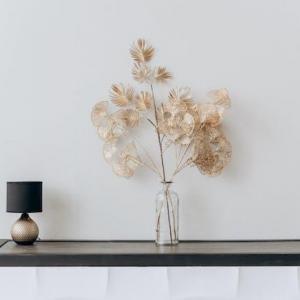
Introduction
Selecting the right colors and paint for your space can significantly impact the overall atmosphere and aesthetics of a room. Whether you're painting a bedroom, living room, or office, understanding color psychology and considering various factors can help you make informed decisions. In this article, we will explore some tips to help you choose the right colors and paint for your space.
Consider the Purpose and Mood
Start by considering the purpose and desired mood of the room. Different colors evoke different emotions and can influence the atmosphere. For example, cool colors like blues and greens create a calming effect, making them suitable for bedrooms or spaces where relaxation is desired. Warm colors like reds and yellows can energize a room and work well in spaces where activity and social interaction occur.
Assess Natural Lighting
Observe the natural lighting in the room. Natural light can affect how colors appear on the walls. If the room receives ample natural light, you can opt for bolder or darker colors. However, in rooms with limited natural light, lighter and softer colors can help create an illusion of brightness and make the space feel more open.
Consider Room Size
Consider the size of the room when choosing colors. Lighter colors tend to make a room feel more spacious and airy, while darker colors can create a cozier and more intimate atmosphere. If you have a small room, using lighter or neutral shades can help visually expand the space.
Harmonize with Existing Elements
Take into account the existing elements in the room, such as furniture, flooring, and fixtures. Choose colors that harmonize with these elements. Consider whether you want the wall color to complement or contrast with the existing elements. Create a cohesive look by selecting colors that work well together.
Test Paint Samples
Before committing to a color, it's essential to test paint samples on the walls. Paint a small section of the wall or use large paint swatches to see how the color appears in the room. Lighting conditions and surrounding colors can influence how the paint looks, so it's crucial to evaluate the samples in the actual space.
Consider Color Schemes
Explore different color schemes to guide your decision-making process. Some common color schemes include monochromatic (varying shades of a single color), complementary (opposite colors on the color wheel), analogous (colors adjacent to each other on the color wheel), and triadic (three colors evenly spaced on the color wheel). Color schemes can help create a harmonious and visually pleasing environment.
Test with Lighting at Different Times
Lighting can change throughout the day, affecting how colors appear. Test the paint colors under different lighting conditions, such as natural daylight, artificial lighting, and evening lighting. This will give you a better understanding of how the colors will look and feel at different times, helping you make a more informed decision.
Consider Paint Finishes
Choose the appropriate paint finish based on your needs and the room's function. Common paint finishes include flat/matte (no sheen), eggshell (low sheen), satin (slight sheen), semi-gloss (medium sheen), and gloss (high sheen). Consider factors like durability, ease of cleaning, and desired aesthetic when selecting a paint finish.
Seek Inspiration
Gather inspiration from various sources such as interior design magazines, websites, or social media platforms. Look for rooms with similar styles or color schemes to get ideas and visualize how different colors can transform the space. Create mood boards or save images that resonate with your desired aesthetic to help guide your color choices.
Trust Your Intuition
In the end, trust your intuition and personal preferences. The colors and paint you choose should reflect your own style and make you feel comfortable and happy in your space. Don't be afraid to experiment and explore unique color combinations that resonate with you.
Conclusion
Choosing the right colors and paint for your space is a creative process that involves considering the purpose, mood, lighting, size, existing elements, and personal preferences. By assessing these factors, testing paint samples, exploring color schemes, considering paint finishes, seeking inspiration, and trusting your intuition, you can create a visually appealing and harmonious environment that reflects your style and enhances the overall atmosphere of your space. Remember, the right colors can transform a room and make it truly feel like home.














